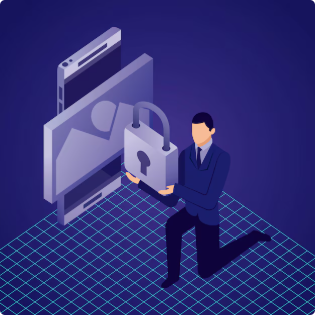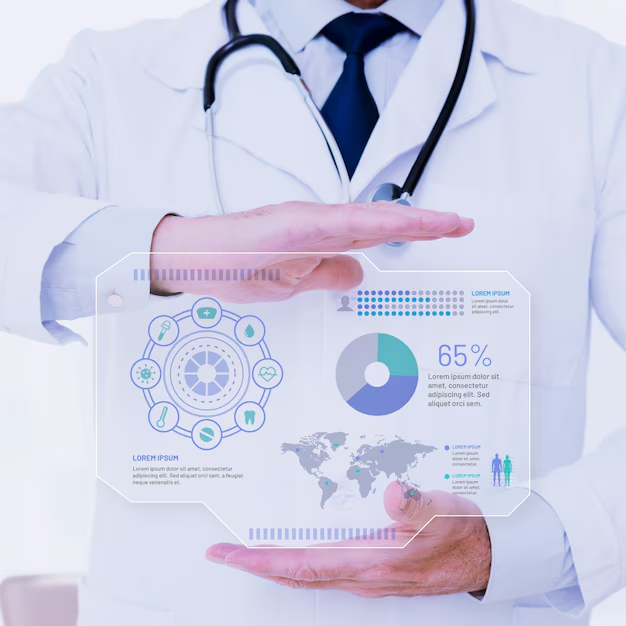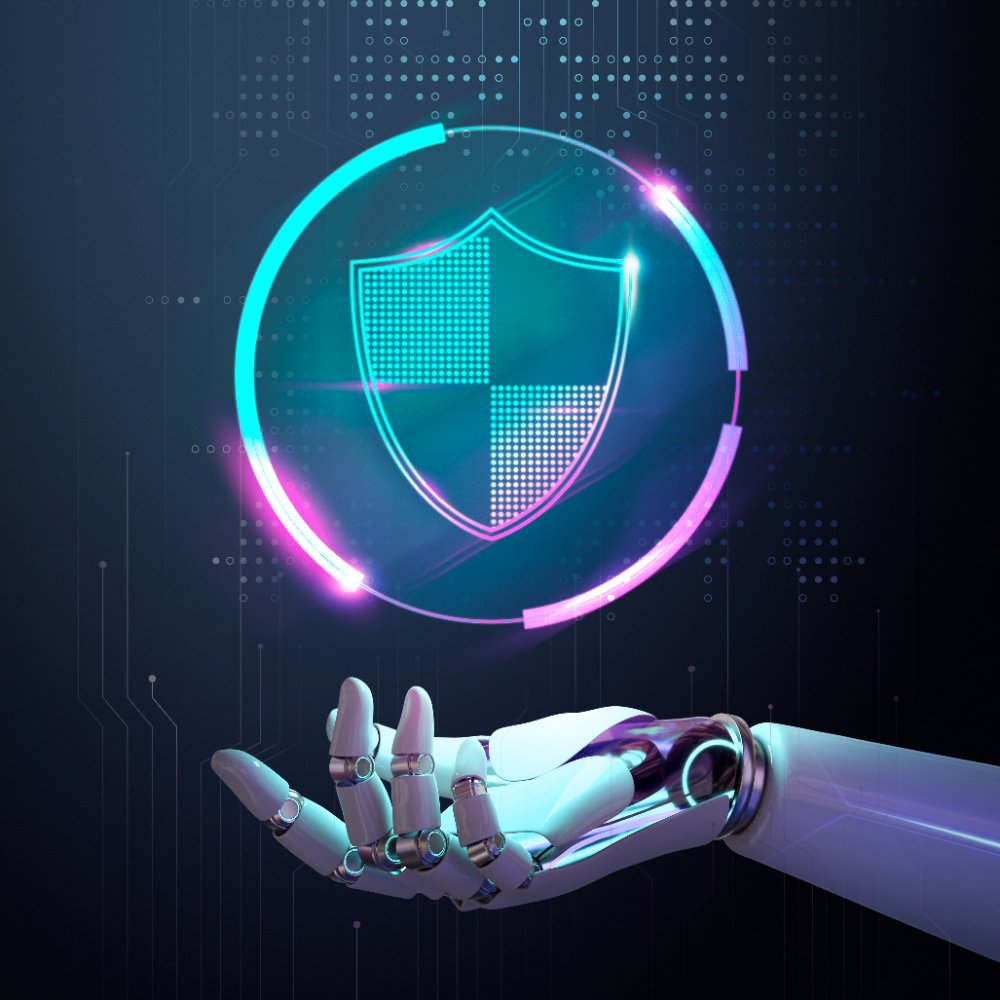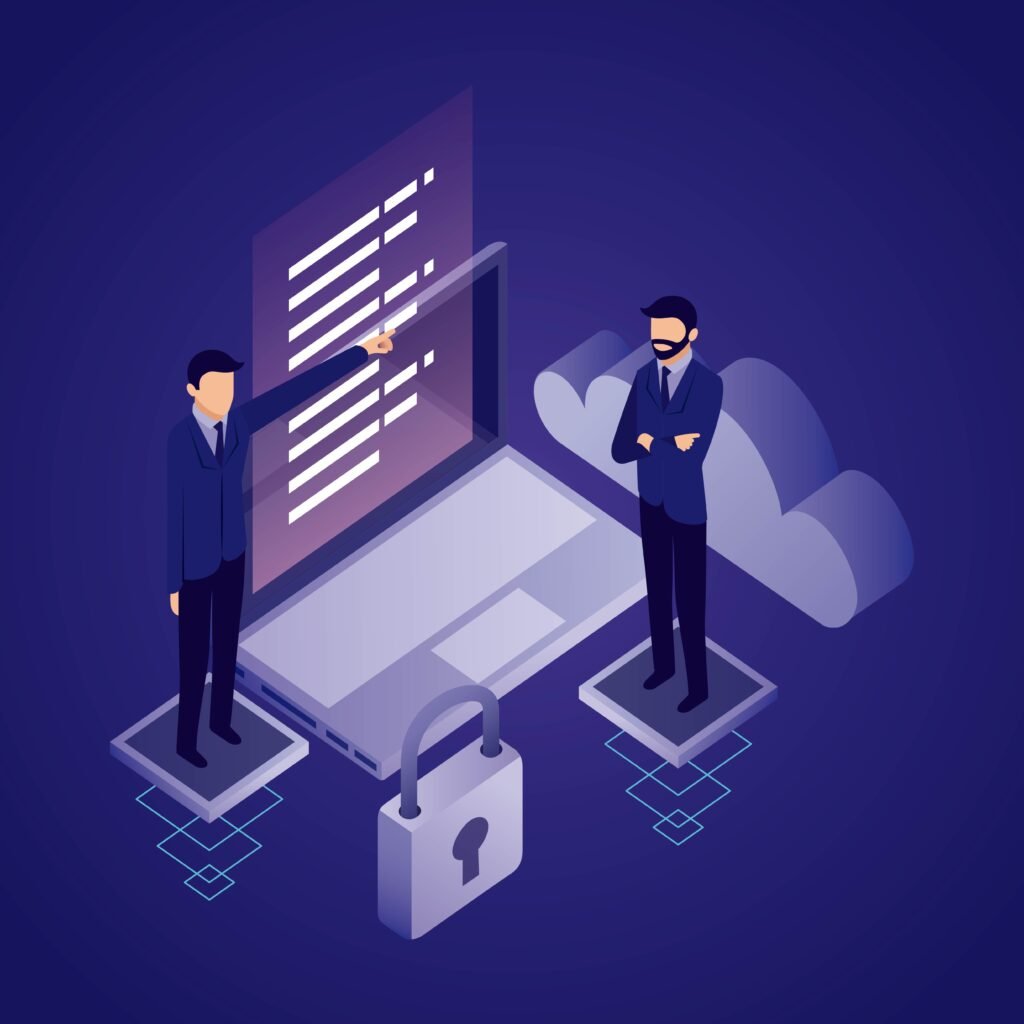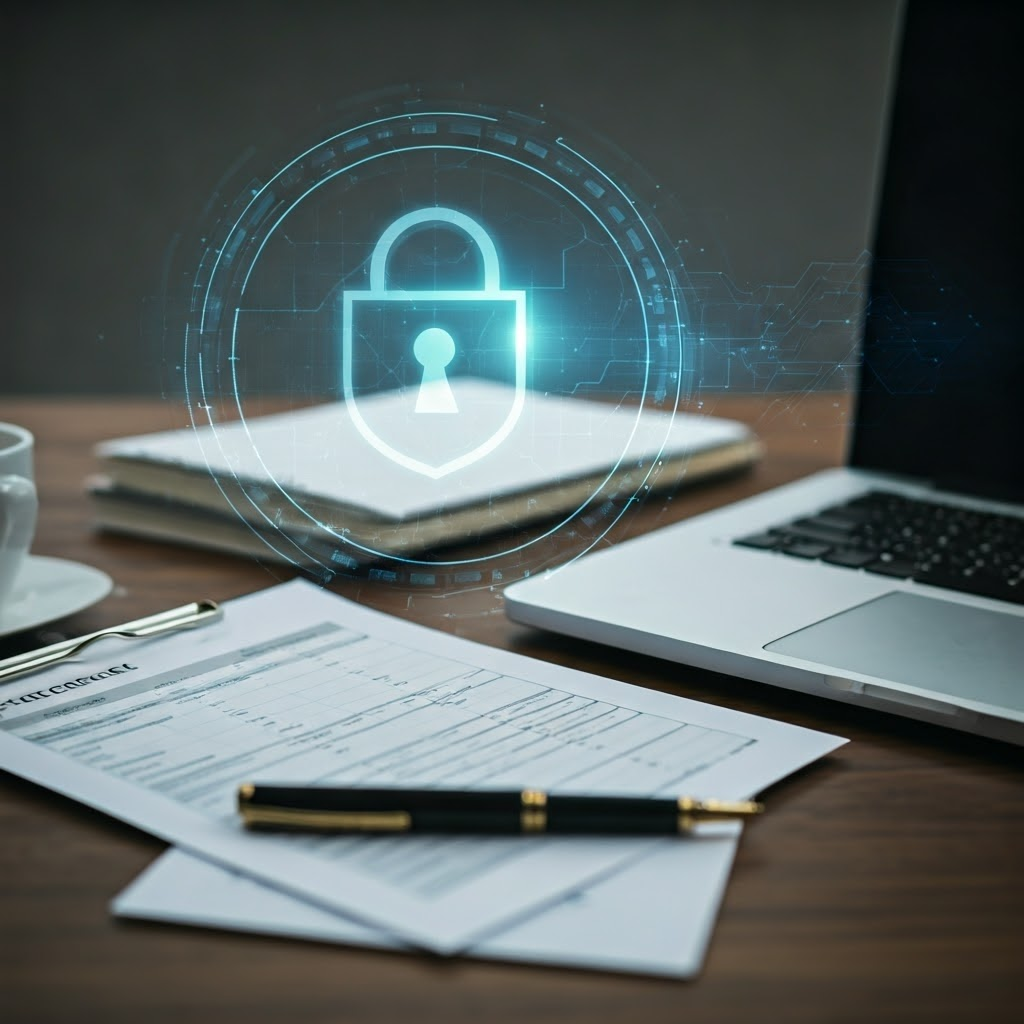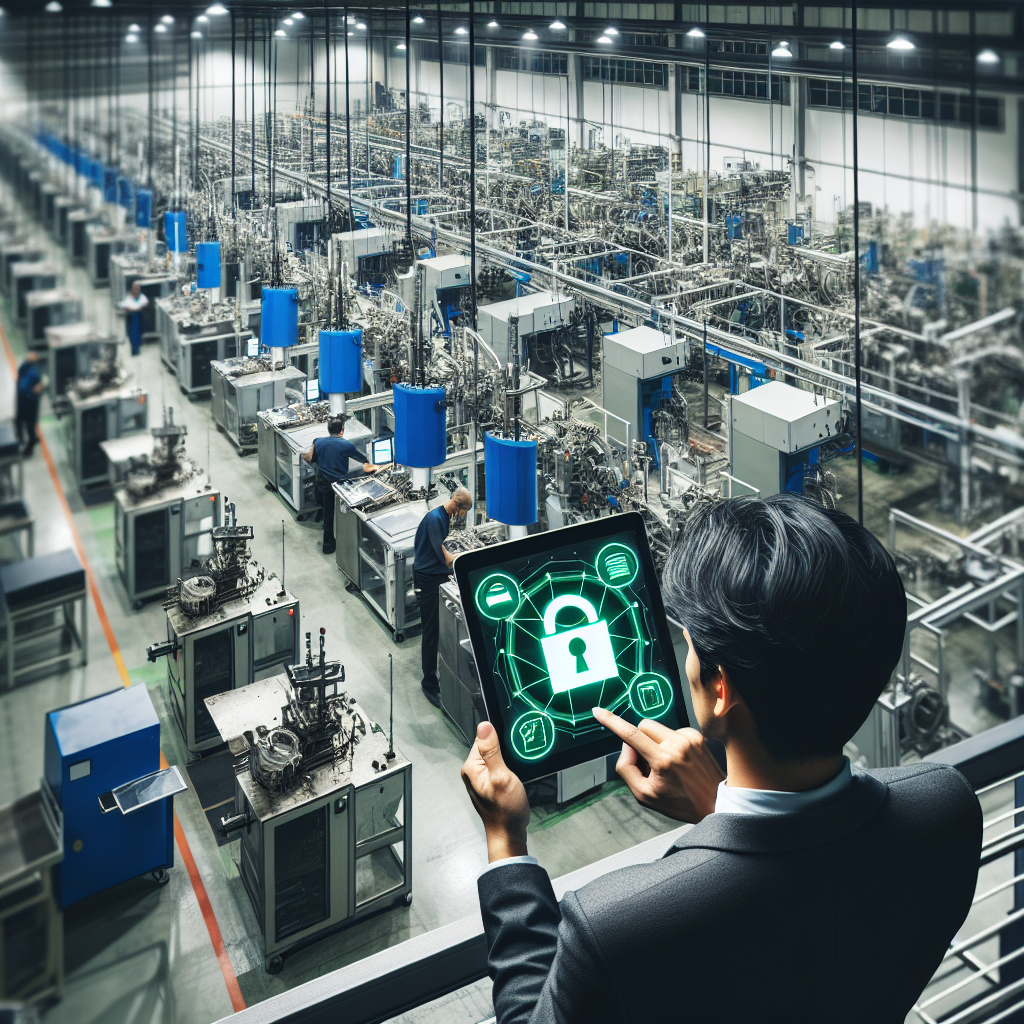Introduction
The rise of technology, remote desktop use, and increased reliance on phone networks have transformed the modern workplace. While offering flexibility and cost savings, these changes also pose cybersecurity challenges. Companies must grasp and tackle the risks of remote access to safeguard sensitive information from emerging cyber threats.
Understanding Remote Access Security Risks
Remote access is crucial for modern businesses but presents unique security challenges. Unlike traditional office setups, remote access expands the security perimeter to include various devices, networks, and connections. This complexity increases the risk of unauthorized access, hacking, and online threats to sensitive company data. Recognizing these risks is essential for implementing robust security measures to safeguard valuable information.
The Challenge of Maintaining Information Confidentiality
In today’s digital world, safeguarding information is crucial, especially with the rise of remote work. Companies must prioritize data security to prevent unauthorized access and cyberattacks. Using strong encryption, multi-factor authentication, and regular security checks is essential to protect sensitive data like customer information and financial records during remote work.
The Perils of Password Sharing and Weak Authentication Practices
Password sharing and weak security practices pose serious risks for remote access. Shared passwords make it easy for hackers to exploit, allowing unauthorized access to sensitive information and important systems. Implementing strong password rules, such as using complex passwords and changing them regularly, is crucial. Additionally, utilizing multi-factor authentication enhances security by requiring users to verify their identity in multiple ways, significantly reducing the risk of unauthorized access.
Key Remote Access Security Threats
The digital world constantly evolves, with cybercriminals becoming more sophisticated. Remote access offers flexibility but also increases vulnerability to attacks. Businesses face various security threats like exploiting software vulnerabilities and risks from using personal devices for work. Recognizing these dangers is crucial.
These threats are persistent challenges requiring continuous strategies to mitigate risks. Failing to address them can lead to financial losses, damage to reputation, and legal repercussions.
Software Vulnerabilities Exploited by Attackers
Software vulnerabilities pose a major security risk, especially for remote access. Cybercriminals exploit weaknesses in software, operating systems, and security measures to breach systems and steal data. Outdated software is particularly vulnerable due to known weak points that newer versions address. Attackers leverage these weaknesses to deploy malware, extract sensitive information, or take control of systems, leading to severe consequences for businesses such as financial losses, reputation damage, and regulatory penalties. To mitigate these risks, regular updates, vulnerability assessments, and prompt fixes are crucial priorities for businesses to safeguard their systems from evolving threats.
Risks Associated with Personal Device Use for Work Purposes
Allowing employees to use personal devices for work can be convenient but poses security risks. Unlike company devices monitored by IT teams, personal devices lack the same level of protection. This “bring your own device” (BYOD) practice increases the vulnerability of sensitive company data due to potential risks like downloading harmful apps, visiting unsafe websites, or using unsecured Wi-Fi networks. To mitigate these risks, companies should establish clear BYOD policies outlining device usage, security requirements, and data protection protocols. Implementing mobile device management (MDM) tools can enforce these policies, safeguard data, and enable remote wiping of devices if necessary.
The Importance of Regular Patching to Mitigate Security Risks
Regular patching is crucial for strong security in IT, especially for remote access. Software companies release patches to fix security issues. These updates prevent attackers from exploiting vulnerabilities and gaining unauthorized access to systems or data. Ignoring or delaying patch management creates opportunities for cybercriminals. A smart patch management plan should include regular vulnerability checks, timely updates, and verification of patch effectiveness. Automating these tasks reduces IT workload and minimizes errors.
Inadequate authentication methods
Inadequate authentication risks remote access security. Strong passwords, MFA, and biometrics are essential for user safety. Organizations must prioritize robust authentication methods to safeguard sensitive data and systems. Regular security checks help identify and address vulnerabilities.
Unsecured networks
Unsecured networks pose risks for remote access security. Use VPN to protect sensitive data from cybercriminals. VPN ensures secure connection over untrusted networks, keeping information safe from unauthorized access. Organizations should mandate VPN use for remote access, especially with sensitive information or important systems involved.
Insider threats
Insider threats can harm remote access security by allowing unauthorized access to sensitive data and systems. Data leaks, whether accidental or intentional, can lead to data breaches, resulting in financial loss and reputational damage for companies. To mitigate insider threats, companies should implement strong security measures such as access controls, activity monitoring, and data loss prevention tools. Regular employee training on security is essential to raise awareness about insider threats and promote responsible data handling.
Social engineering attacks
Social engineering attacks pose a constant security threat when working remotely. These attacks focus on tricking individuals rather than exploiting technical vulnerabilities, aiming to elicit sensitive information or unauthorized access. Common methods include phishing emails, malicious links, and impersonation scams. Attackers exploit the privacy of remote work to deceive individuals more effectively. Regular training is crucial to help employees recognize social engineering tactics and report suspicious activities. Organizations should implement robust email security tools such as spam filters and phishing protection to mitigate successful attacks.
Remote desktop protocol vulnerabilities
RDP weaknesses pose a significant threat to remote access security. Attackers exploit these vulnerabilities to gain unauthorized system access, leading to data breaches and malware infections. To mitigate risks, organizations should prioritize securing RDP connections by using strong passwords, enabling Network Level Authentication (NLA) and applying the latest security updates to RDP clients and servers.
Lack of remote access policies
Unclear remote access rules pose significant security risks for organizations. Employees may inadvertently jeopardize sensitive data or systems without proper guidelines. Using personal devices or connecting to unsecured Wi-Fi can create vulnerabilities for attackers. Effective remote access policies encompass device management, password security, data protection, acceptable use rules, and problem-solving procedures. By communicating clear rules effectively, organizations promote safe remote access practices and minimize security risks. Regular updates are crucial to address evolving security threats.
Data breaches
Data breaches, resulting from cyberattacks or employee errors, expose sensitive information like customer details and financial records. The consequences can include financial losses, legal troubles, damage to reputation, and lost trust. To prevent breaches, businesses must implement robust security measures including access controls, encryption, intrusion detection systems, and regular security checks.
Third-party access
Third-party access to company systems and data is prevalent today. While working with vendors and service providers can be beneficial, it also poses security risks if not managed correctly. Companies must be cautious with third-party access to prevent potential breaches. Conducting thorough security checks on vendors, establishing clear security protocols in contracts, implementing robust access controls, and monitoring third-party activities are essential steps to mitigate risks.
Lack of encryption
In today’s data-driven world, encryption is crucial for securing information and preventing unauthorized access. Without encryption, sensitive data is vulnerable to interception and exposure. Businesses must prioritize using encryption tools like file encryption, full-disk encryption, and VPNs for secure remote access to safeguard financial details, customer information, and trade secrets from breaches.
Outdated security protocols
Outdated security protocols pose a significant risk for businesses today. Technology evolves rapidly, and cybercriminal methods evolve with it. Using old security protocols is akin to relying on outdated maps – it increases the likelihood of encountering unforeseen issues. Outdated protocols may have known vulnerabilities that attackers can exploit to access sensitive information. Regular security checks, identifying weaknesses, and timely updates are crucial to mitigating these risks. By staying current with the latest security protocols and best practices, businesses can enhance their security, reduce the risk of breaches, and maintain the trust of customers and partners in today’s interconnected digital landscape.
Malware and ransomware attacks
Malware and ransomware pose serious cyber threats to individuals and organizations today. These harmful programs can infiltrate systems through various means like email attachments, websites, or software vulnerabilities. Malware can steal data, monitor activities, or cause disruptions, while ransomware encrypts data and demands payment for decryption.
To safeguard against these threats, implement a robust security plan involving antivirus software, regular backups, software updates, cautious email and link handling, and strong password practices.
Inadequate employee training
Inadequate employee training poses a significant cybersecurity risk, even with strong technical protections in place. Security breaches often result from human errors stemming from a lack of cybersecurity knowledge. Untrained employees are susceptible to phishing scams, downloading harmful software, and mishandling private information. Organizations must prioritize comprehensive security awareness training to empower employees as the first line of defense against cyber threats. Training programs should educate employees on potential threats, safe online practices, password security, and reporting suspicious activities.
Strategies for Preventing Remote Access Security Risks
Protecting sensitive data while working from home requires a plan that combines technology and user knowledge. Companies need to add security measures to address issues like unwanted access, data leaks, and cyberattacks. A thorough security approach creates a safe remote work environment.
Implementing Comprehensive Security Training Programs
Investing in robust security training for employees is crucial to foster a security-conscious culture and mitigate risks associated with remote access. These programs educate staff on various cybersecurity aspects such as identifying phishing attempts, using strong passwords, implementing multi-factor authentication, and practicing safe internet browsing habits.
Device security should also be emphasized, focusing on the dangers of public Wi-Fi and the importance of keeping personal devices updated and secure. Regular security awareness initiatives, simulated phishing tests, and practical training sessions serve to reinforce best practices and engage employees in maintaining a secure remote work environment.
By instilling a security-focused culture and equipping employees with necessary skills, organizations can significantly enhance their defense against evolving threats.
Establishing Robust Technical Controls and User Visibility
In addition to robust security training, strong technical controls are crucial for preventing security risks while working remotely. These controls maintain a secure work environment, safeguarding sensitive data and systems from unauthorized access. Utilizing a Virtual Private Network (VPN) for all remote connections is essential, creating a secure, encrypted data path over the internet. This protects information from unauthorized viewers. Multi-factor authentication (MFA) further enhances security by requiring multiple forms of verification, such as passwords and one-time codes sent to mobile devices, making unauthorized access significantly more challenging.
Enhancing Communication with Remote Workers
Clear communication with remote workers is crucial for security and a safe work environment. Regular updates from IT and security teams help keep security at the forefront. Setting up clear reporting channels for security issues is vital, ensuring remote workers feel safe reporting any concerns. Acting swiftly in response to incidents is key to minimizing harm. Fostering a culture of transparency and open discussions about security promotes teamwork and a secure remote work environment.
Identifying and Addressing Security Gaps
A proactive security approach is vital in today’s ever-evolving threat landscape. Regularly updating security measures helps identify and address vulnerabilities before they are exploited. By prioritizing security, businesses demonstrate their commitment to safeguarding data, earning customer trust, and ensuring smooth operations. Ignoring these risks can result in significant consequences such as data breaches, financial losses, and damage to reputation.
Continuous Monitoring and Assessment for Early Detection
In the digital world, security is an ongoing process, not a one-time task. Continuous evaluation is crucial for effective security, especially when dealing with risks from remote access. Strong monitoring tools provide visibility into network activity, enabling prompt action against suspicious events like unusual logins or data transfers.
Regular security checks such as vulnerability scans and penetration tests identify and address system weaknesses. By monitoring and reviewing security measures, businesses can proactively protect their assets and reputation from evolving threats.
Tailoring Security Measures to Fit Company Needs and Threat Landscape
Every organization has unique cybersecurity needs based on factors like industry, size, and data sensitivity. Tailoring security measures to these specific requirements and evolving threats is crucial. A detailed risk assessment identifies vulnerabilities and potential threats, guiding the implementation of appropriate security features such as multi-factor authentication and encryption.
Why Choose Our Remote Access Solutions?
Our remote access solutions offer top-notch security features and user-friendly experiences, enabling your team to work productively from anywhere. With a strong focus on data security, our multi-layered approach ensures your sensitive information stays safe.
| Feature | Description | |
| Multi-factor Authentication | Enhanced login security with multiple verification factors | |
| Data Encryption | Protection of data at rest and in transit | |
| Threat Monitoring | Real-time detection and response to suspicious activities | |
| Secure Access Control | Granular access permissions to protect sensitive information |
Demonstrated Success in Enhancing Remote Access Security
Our experts excel in enhancing businesses’ remote access security. We tailor solutions to your specific needs by assessing current systems, establishing strong authentication methods, data encryption, and continuous monitoring to safeguard sensitive information.
Customizable Solutions to Meet Unique Business Requirements
We offer customized remote access solutions tailored to your business needs, risks, and compliance requirements. Our team collaborates closely with you to understand your industry regulations, security concerns, and growth plans. Whether you need specific access controls, custom authentication, or compliance tools, we adjust our solutions accordingly. We believe in integrating remote access seamlessly into your workflows to enhance security without compromising productivity. Let us help you create a secure and adaptable work environment for your employees’ success in today’s dynamic business landscape.
Conclusion
Reducing remote access security risks is crucial for protecting sensitive information. Companies can enhance security with strong technical controls, thorough training, and regular system checks. Adapting security measures to specific needs and staying informed of new threats is essential. Our customizable remote access solutions bolster security for diverse business requirements. Contact Zealinx today to learn more about improving your remote access security.
Frequently Asked Questions
What are the Most Common Remote Access Security Risks?
Some common security risks with remote access are problems with remote desktops. There are also weak telephone networks. Cyberthreats can come from sharing passwords. In addition, there are not enough security protocols to keep data safe.
How Often Should Remote Access Security Measures Be Reviewed?
Regularly checking the security measures for remote access is very important. This includes updating patches and looking for weaknesses in remote desktop and telephone network functions. Doing this helps us fight against new cyberthreats.
What Steps Can Individuals Take to Enhance Their Remote Access Security?
People can greatly improve their remote access security. They can do this by using strong passwords. It’s also important to use encryption when connecting to public networks. Additionally, staying alert for possible cyberthreats is key.
How Does Our Solution Adapt to the Evolving Threat Landscape?
Our solution changes to meet new threats. We do this by watching everything closely, updating our tech tools often, and taking steps to fix new issues in remote desktop and telephone network security.




